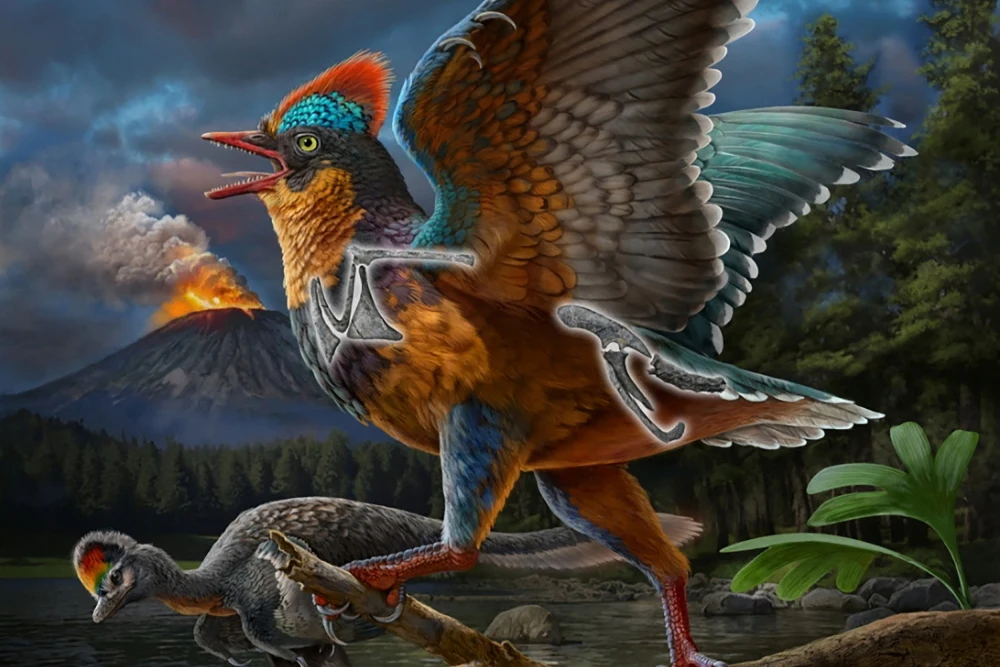Birds with modern-day features roamed the skies millions of years earlier than previously thought, according to a study published in the journal Nature.
The discovery of a Jurassic bird fossil in southeastern China is reshaping our understanding of avian evolution, researchers report.
The newly identified species, Baminornis zhenghensis, a quail-sized bird, soared through the skies approximately 150 million years ago during the Jurassic period, according to a study published Wednesday in the journal Nature. This places it among the earliest known birds, alongside the renowned Archaeopteryx, which was discovered in Germany in 1862 and is of comparable age.
“For more than 150 years now, Archaeopteryx has stood alone,” said Steve Brusatte, a University of Edinburgh paleontologist who authored a commentary on the study.
“Throughout that time, it has remained the only unquestionably identified bird fossil from the Jurassic Period,” Brusatte told NBC News in an email.
Although other birdlike Jurassic fossils have been uncovered sporadically, Brusatte noted a “huge mystery and a frustrating gap” in the fossil record: If Archaeopteryx was already capable of flight, other birds must have been present as well. So where were their fossils?
The 2023 discovery of Baminornis in Zhenghe County, Fujian Province, China, is now considered one of the most significant finds since Archaeopteryx, helping to bridge that gap. This makes it the “second unquestioned bird from the Jurassic Period,” Brusatte said.
Unlike the half-bird, half-reptile Archaeopteryx, which possessed a long, slender tail akin to that of a velociraptor, Baminornis had a short tail with some vertebrae fused into a stubby pygostyle—a key aerodynamic adaptation that shifts the body’s center of mass toward the wings. This feature, found in modern birds, enhances flight efficiency.
Prior to the discovery of Baminornis, such short tails had only been observed in birds known to have existed approximately 20 million years later, such as Eoconfuciusornis and Protopteryx.
“What excites me most is that it is a more advanced bird than Archaeopteryx, and it could fly much better,” Brusatte said. Baminornis displayed a more sophisticated anatomy than Archaeopteryx, which he described as a “primitive” bird with claws and sharp teeth resembling its dinosaur ancestors.
Archaeopteryx played a pivotal role in establishing that modern birds evolved from dinosaurs. Brusatte described it as a “textbook example of a creature caught in the act of evolution, like a freeze frame.”
The striking differences between these two similarly aged birds, found approximately 5,500 miles apart, have led researchers to propose that avian evolution began millions of years earlier than previously estimated—possibly between 164 and 172 million years ago.
Alongside numerous fossils of aquatic and semiaquatic creatures, the Zhenghe Fauna collection, as it is known, includes at least three fossils identified as belonging to birds or their closest relatives. Researchers believe this collection has great potential to “enhance our understanding of early bird diversification” and “fill a critical gap in the evolutionary history of terrestrial ecosystems” toward the latter part of the Jurassic period.
Although the Baminornis fossil preserves much of the skeleton, the feathers were not retained, leaving unanswered questions regarding the size and structure of its wings. Additionally, the skull is missing, limiting insight into its dietary habits.
Despite these gaps, Brusatte emphasized that “Baminornis demonstrates that a variety of birds existed during the Jurassic, and they flew in different ways.”
